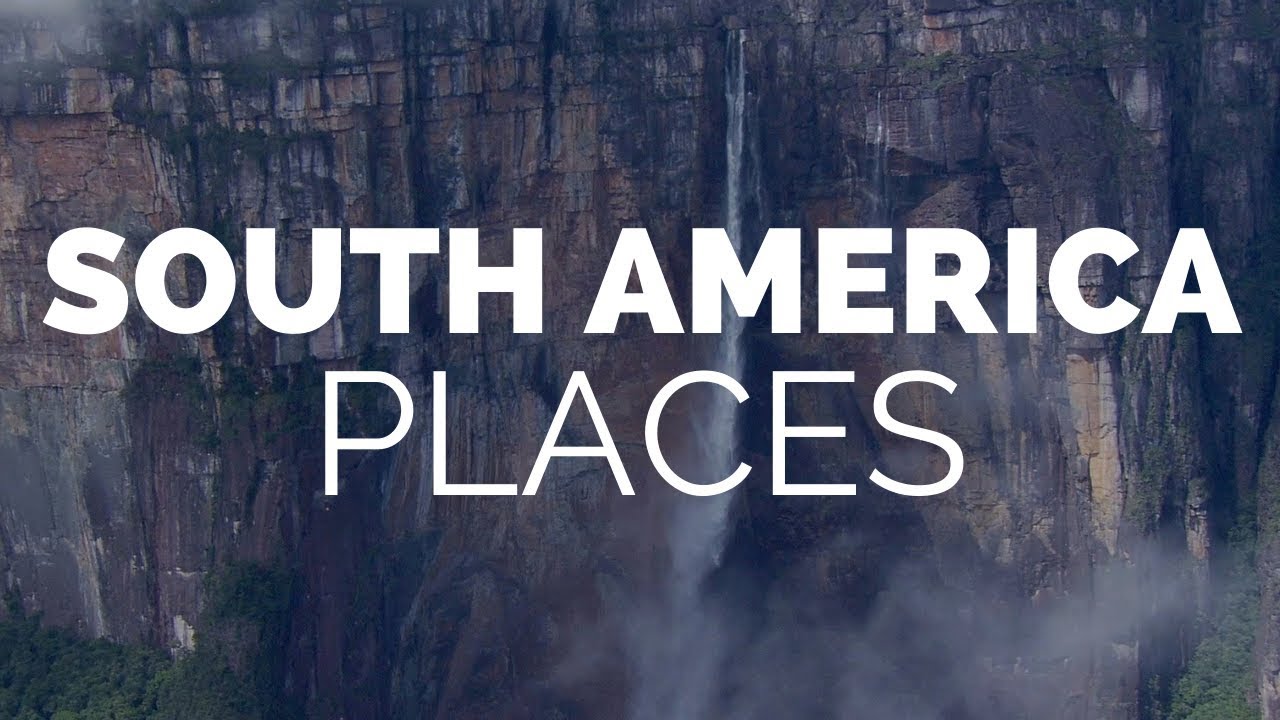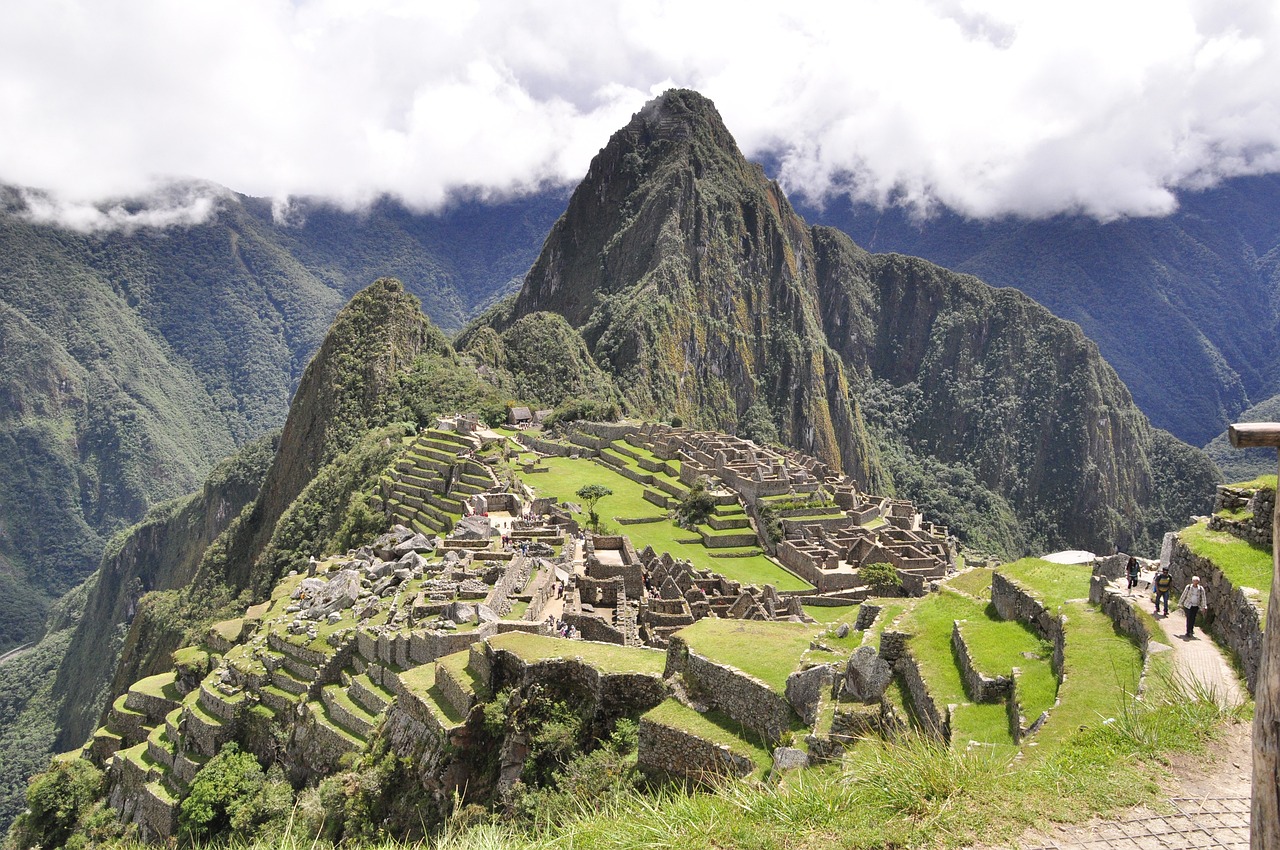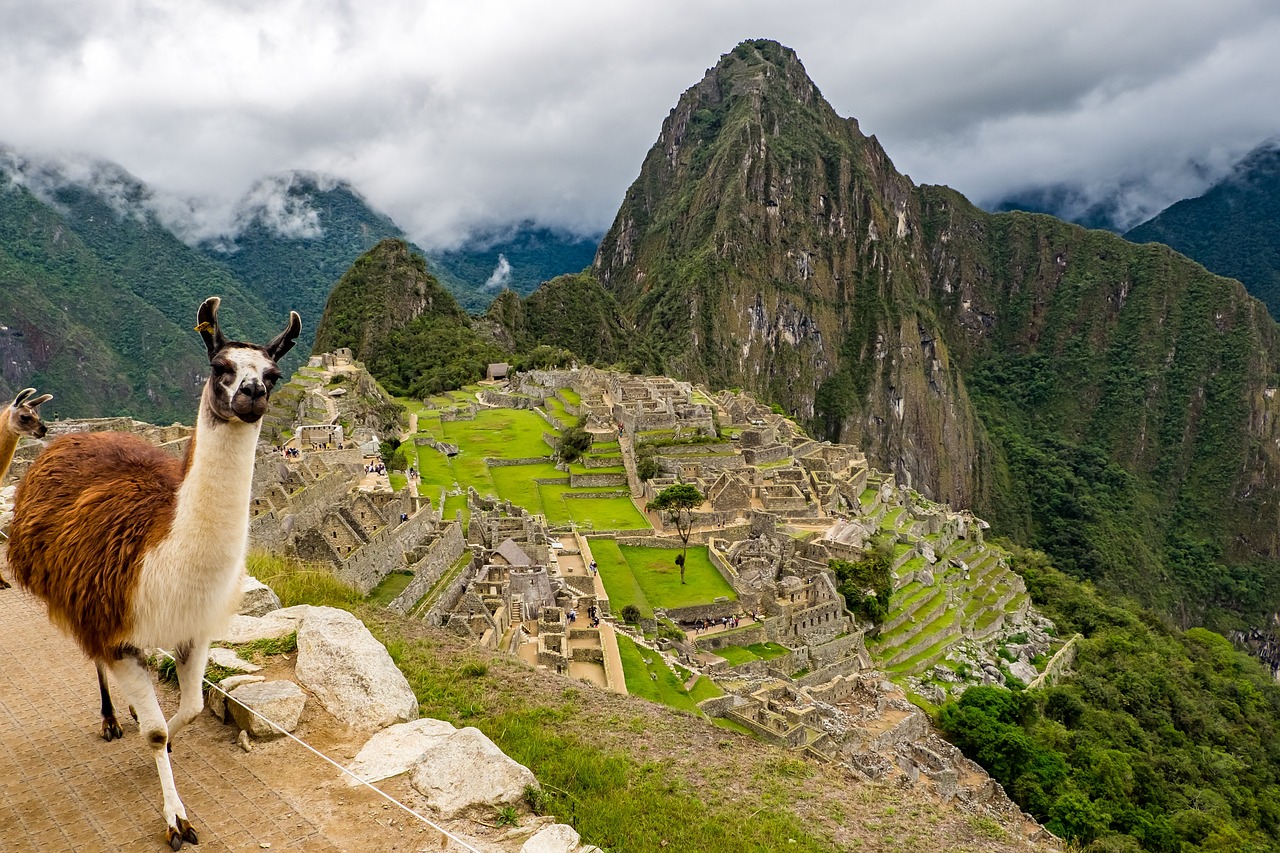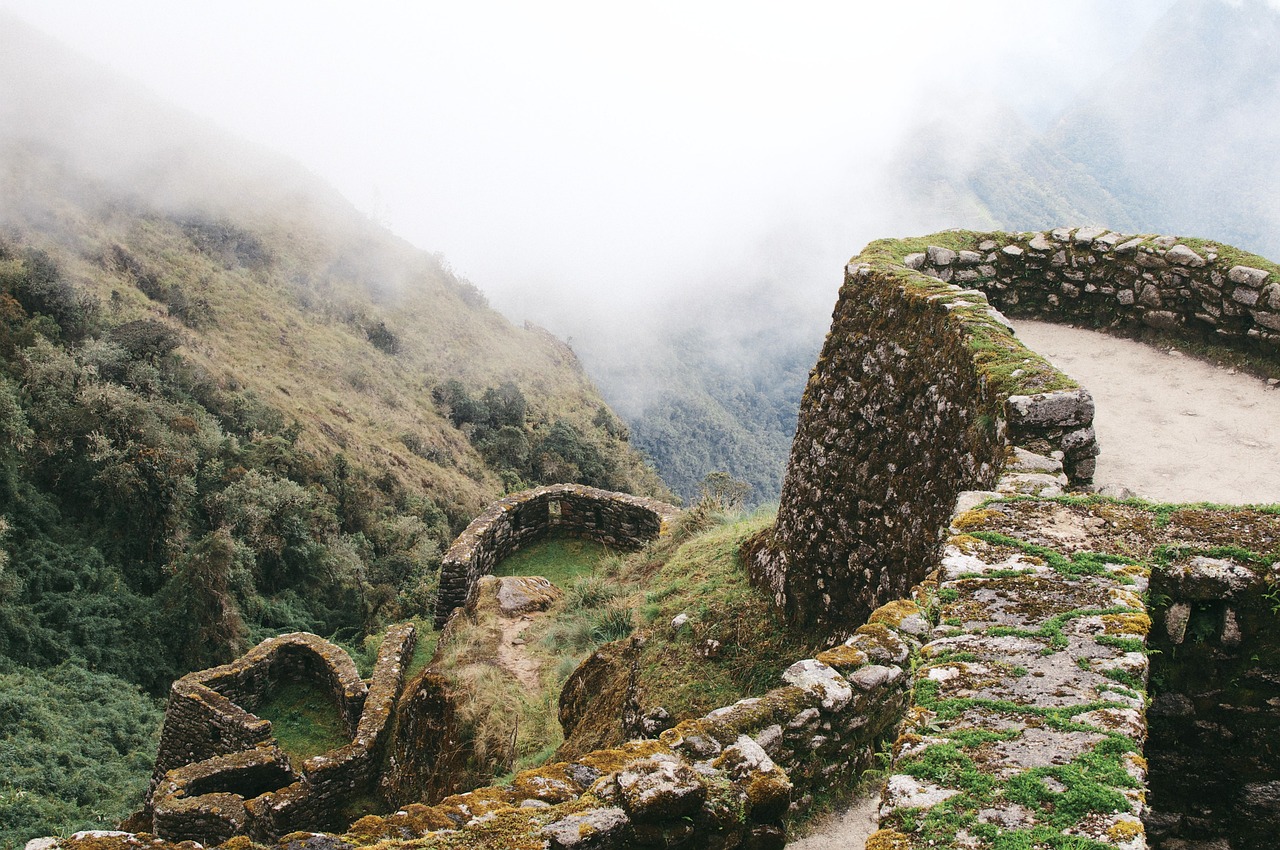Located in Peru, Machu Picchu is a must-see destination in South America, offering a glimpse into the ancient Incan civilization. The site, perched high in the Andes Mountains, provides stunning panoramic views and a sense of wonder as you explore the intricately built structures and terraces. Machu Picchu is a UNESCO World Heritage Site and one of the New Seven Wonders of the World, making it a top attraction for history buffs, nature lovers, and adventure seekers alike.
Visiting Machu Picchu allows you to immerse yourself in the rich history and culture of the region while also enjoying the breathtaking beauty of the surrounding landscape. Whether you choose to hike the famous Inca Trail to reach the site or take a scenic train ride, Machu Picchu promises an unforgettable experience that will leave you in awe of the ancient marvels of South America.

Overview of Machu Picchu
Machu Picchu, an iconic archaeological site nestled high in the Andes Mountains of Peru, holds a rich history that continues to intrigue visitors from around the world. Built by the Inca Empire in the 15th century and abandoned during the Spanish conquest, this ancient city remains remarkably well-preserved, providing valuable insights into Inca civilization. The historical significance and architectural marvel of Machu Picchu make it a UNESCO World Heritage Site and one of the New Seven Wonders of the World.
History of Machu Picchu
Dating back to the mid-15th century, Machu Picchu was constructed during the reign of the Inca Emperor Pachacuti. Serving as a royal estate or possibly a religious retreat, the city was hidden from the Spanish conquistadors and rediscovered in 1911 by American archaeologist Hiram Bingham. The intricate stone structures, terraces, and temples at Machu Picchu are a testament to the advanced engineering and astronomical knowledge of the Inca people.
Significance of Machu Picchu
Machu Picchu holds immense cultural and historical significance as a symbol of Inca power, spirituality, and architectural ingenuity. The site’s strategic location amidst the Andes Mountains and its unique blend of natural beauty and man-made structures have captivated scholars and travelers alike. Machu Picchu’s designation as a World Heritage Site and its inclusion in the list of New Seven Wonders of the World highlight its global importance and allure.
Archaeological Discoveries
Ongoing archaeological research at Machu Picchu continues to unravel the mysteries surrounding this ancient citadel. Scholars have uncovered new insights into the Inca civilization, daily life in Machu Picchu, and the advanced irrigation systems that sustained the city. Recent discoveries of burial sites, agricultural terraces, and ceremonial complexes shed light on the cultural practices and social structure of the Inca Empire.
Getting to Machu Picchu
Embarking on a journey to Machu Picchu involves careful planning and preparation to ensure a memorable and enriching experience in this remote corner of the world. Traveling to Peru, the country that houses Machu Picchu, is the first step towards exploring this archaeological wonder. From there, visitors can choose different modes of transportation to reach Machu Picchu, including trekking the famous Inca Trail.
Traveling to Peru
When traveling to Peru, adventurers are welcomed by a vibrant culture, diverse landscapes, and a rich historical heritage. The country’s capital, Lima, serves as a gateway to exploring the archaeological sites, Andean villages, and Amazon rainforest that make Peru a unique destination. Visitors can immerse themselves in Peruvian cuisine, folklore, and traditions while preparing for the adventure ahead.
Modes of Transportation to Machu Picchu
Reaching Machu Picchu involves several transportation options, each offering a different experience for travelers. Most visitors opt for a scenic train ride from Cusco or Ollantaytambo to the town of Aguas Calientes, the gateway to Machu Picchu. Alternatively, some choose to hike the famous Inca Trail, a challenging but rewarding trek that showcases stunning landscapes, Inca ruins, and diverse ecosystems along the way.
Hiking the Inca Trail
For outdoor enthusiasts seeking an unforgettable adventure, hiking the Inca Trail to Machu Picchu provides a unique opportunity to experience the Andean wilderness up close. The classic route spans approximately 26 miles through mountain passes, cloud forests, and Inca ruins before culminating at the Sun Gate overlooking Machu Picchu. Trekkers are rewarded with breathtaking vistas, interaction with local communities, and a sense of accomplishment upon reaching the ancient citadel.
Exploring Machu Picchu
Upon arrival at Machu Picchu, travelers are greeted by a mystical landscape that beckons exploration and discovery. The site is home to a multitude of ancient structures, temples, terraces, and plazas that offer insight into the Inca way of life. Whether opting for a guided tour or independent exploration, visitors can immerse themselves in the history, culture, and beauty of Machu Picchu.
Main Attractions in Machu Picchu
Machu Picchu boasts several key attractions that showcase its architectural grandeur and cultural significance. The Temple of the Sun, Intihuatana Stone, and Royal Tomb are among the must-visit sites within the citadel. The vast agricultural terraces, urban sectors, and ceremonial platforms provide a glimpse into the daily activities and religious practices of the Inca people.
Guided Tours vs. Independent Exploration
When exploring Machu Picchu, travelers can choose between guided tours led by knowledgeable experts or independent exploration at their own pace. Guided tours offer in-depth commentary, historical context, and insider information about the site’s significance. Independent explorers have the freedom to wander the ruins, take photos, and soak in the ambiance of Machu Picchu without time constraints.
Best Time to Visit
The best time to visit Machu Picchu is during the dry season from May to October, when clear skies and mild temperatures prevail in the region. Peak tourist season typically occurs from June to August, so visitors looking to avoid crowds may opt for shoulder months like April, May, September, or October. Regardless of the season, Machu Picchu’s beauty and allure remain constant throughout the year.
Accommodation and Dining
While Machu Picchu itself does not offer on-site accommodation, travelers can find a range of lodging options in nearby towns like Aguas Calientes and Ollantaytambo. These towns provide cozy hotels, guesthouses, and lodges for visitors to rest and rejuvenate after a day of exploration. Additionally, the region offers diverse dining experiences showcasing Peruvian cuisine and local delicacies.
Lodging Options in the Area
Aguas Calientes, the bustling town at the foot of Machu Picchu, features a variety of accommodations ranging from budget-friendly hostels to luxury hotels. Visitors can choose between riverside lodges, mountain retreats, or boutique hotels with stunning views of the surrounding landscape. Ollantaytambo, another nearby town, offers quaint bed and breakfasts, eco-lodges, and charming guesthouses for a comfortable stay.
Local Cuisine and Dining Experiences
Peruvian cuisine is renowned for its diverse flavors, fresh ingredients, and fusion of culinary traditions. Travelers visiting Machu Picchu can savor traditional dishes like ceviche, lomo saltado, and causa rellena at local restaurants and eateries. Many establishments in Aguas Calientes and Ollantaytambo offer farm-to-table meals, indigenous recipes, and Peruvian specialties that reflect the country’s gastronomic heritage.
Recommended Restaurants Near Machu Picchu
For a taste of authentic Peruvian cuisine near Machu Picchu, visitors can dine at restaurants like Toto’s House in Aguas Calientes, known for its Andean-inspired dishes and artisanal cocktails. In Ollantaytambo, Hearts Cafe serves organic fare and supports sustainable initiatives in the community. Other top dining spots include El Albergue Restaurant, Inkafe, and Café Mayu, each offering a unique culinary experience in the Andean region.

Safety and Health Tips
Maintaining safety and well-being while exploring Machu Picchu is essential for a smooth and enjoyable travel experience. Visitors should prepare for the high-altitude conditions, unpredictable weather, and rugged terrain of the Andes Mountains. Taking necessary precautions, investing in travel insurance, and following safety guidelines can ensure a safe and memorable visit to this archaeological marvel.
Altitude Sickness Prevention
Due to Machu Picchu’s high altitude of over 7,970 feet above sea level, travelers may experience symptoms of altitude sickness, including nausea, dizziness, and fatigue. To prevent altitude sickness, visitors are advised to acclimatize slowly by spending time in Cusco or the Sacred Valley before ascending to Machu Picchu. Drinking plenty of fluids, avoiding alcohol, and resting adequately can help alleviate symptoms and ensure a comfortable visit.
Travel Insurance Recommendations
Travel insurance is crucial for protecting against unforeseen circumstances such as flight cancellations, medical emergencies, or lost luggage during the journey to Machu Picchu. Visitors are encouraged to purchase comprehensive travel insurance that covers trip interruptions, medical expenses, and emergency evacuation in remote areas. Researching reputable insurance providers and reading policy details can help travelers select the appropriate coverage for their trip.
Safety Precautions while Exploring Machu Picchu
When navigating the rugged terrain of Machu Picchu, travelers should prioritize safety by wearing sturdy footwear, carrying essential supplies like water and sunscreen, and following designated trails within the archaeological site. Visitors should be cautious around steep cliffs, uneven paths, and slippery surfaces, especially during rainy weather. Respecting the sanctity of the site, avoiding littering, and adhering to park regulations contribute to preserving Machu Picchu for future generations.
Cultural and Natural Experiences
Beyond its archaeological marvels, Machu Picchu offers enriching cultural and natural experiences that showcase the diversity and beauty of the Andean region. Travelers can engage with local indigenous communities, witness diverse flora and fauna, and participate in traditional festivals and events that celebrate the heritage and vibrancy of Peruvian culture.
Local Indigenous Communities
Exploring the surroundings of Machu Picchu provides opportunities to engage with indigenous Quechua communities that have preserved their language, customs, and traditions for centuries. Visitors can participate in cultural exchanges, homestays, and workshops to learn about Andean practices, agricultural techniques, and spiritual beliefs. Interacting with local artisans, musicians, and storytellers offers a glimpse into the rich cultural tapestry of the region.
Flora and Fauna in the Region
The diverse ecosystems surrounding Machu Picchu boast a wealth of flora and fauna unique to the Andes Mountains. Travelers can spot exotic orchids, hummingbirds, and butterflies in the cloud forests, while exploring the lush vegetation and biodiversity of the region. Wildlife enthusiasts may encounter llamas, vicuñas, and spectacled bears in their natural habitats, adding a touch of adventure to the cultural and historical exploration of Machu Picchu.
Traditional Festivals and Events
Throughout the year, Peruvian communities near Machu Picchu celebrate traditional festivals and events that pay homage to their indigenous roots and cultural heritage. Travelers visiting during festivals like Inti Raymi (Festival of the Sun), Virgen del Carmen, or Cusco’s Corpus Christi can witness colorful processions, music, dance, and rituals that showcase local traditions and spiritual practices. These festivities provide a glimpse into the vibrant and living culture of the Andean people.

Guided Tours and Excursions
Enhancing the Machu Picchu experience with guided tours and excursions offers travelers a deeper understanding of the site’s history, significance, and surrounding attractions. Various tour operators provide options for exploring Machu Picchu, visiting alternative attractions nearby, and discovering other Inca heritage sites in the region for a comprehensive and immersive journey through ancient Peru.
Options for Guided Tours
Guided tours of Machu Picchu cater to different interests, preferences, and travel styles, ranging from standard group tours to private experiences with expert guides. Visitors can choose thematic tours focused on archaeology, ecology, or spiritual aspects of the site, as well as customized itineraries that include sunrise visits, hiking excursions, or cultural immersions. Selecting a reputable tour operator that aligns with one’s interests can enhance the educational and sensory experience of exploring Machu Picchu.
Alternative Attractions to Visit Nearby
In addition to Machu Picchu, the surrounding region offers a wealth of alternative attractions and hidden gems that complement the archaeological site. Travelers can visit the Sacred Valley of the Incas, a fertile landscape dotted with Inca ruins, traditional villages, and agricultural terraces. Other nearby sites like Ollantaytambo, Moray, and Pisac showcase the architectural prowess and cultural legacy of the Inca civilization, providing a multifaceted exploration of the Andean heritage.
Inca Heritage Sites around Machu Picchu
Exploring the lesser-known Inca heritage sites around Machu Picchu reveals the extensive network of archaeological wonders hidden in the Andean mountains. Travelers can visit sites like Sacsayhuaman, Tambomachay, and Q’enqo near Cusco, which showcase the sophisticated masonry, religious significance, and strategic layout of Inca settlements. The intricate stone carvings, celestial alignments, and ancient rituals preserved at these sites offer a glimpse into the spiritual and architectural achievements of the Inca Empire.
Souvenirs and Shopping
Bringing home a piece of the Andean culture and heritage through souvenirs and artisanal products adds a memorable touch to the Machu Picchu experience. Travelers can explore local markets, handicraft stores, and artisan workshops to find unique gifts, textiles, and keepsakes that reflect the craftsmanship and creativity of Peruvian artisans.
Local Handicrafts and Artisanal Products
Peru is renowned for its vibrant handicrafts and artisanal products that showcase the country’s rich cultural heritage and artistic traditions. Travelers visiting Machu Picchu can purchase handwoven textiles, alpaca wool garments, pottery, jewelry, and leather goods crafted by skilled artisans from indigenous communities. Each piece carries a story, symbol, or design inspired by Andean folklore, nature, and ancient symbols, making it a cherished memento of the journey to Machu Picchu.
Best Places to Buy Souvenirs
Exploring the markets and shops in Aguas Calientes, Ollantaytambo, and Cusco offers travelers a diverse selection of souvenirs and gifts to commemorate their visit to Machu Picchu. Artisan markets like Pisac Market, San Pedro Market, and Avenida El Sol in Cusco showcase a range of handicrafts, textiles, and artwork created by local artists and cooperatives. Visitors can haggle for prices, interact with vendors, and discover one-of-a-kind treasures that capture the essence of Peruvian culture.
Unique Items to Bring Home
When choosing souvenirs to bring home from Machu Picchu, travelers may consider unique items like hand-painted ceramics, silver jewelry, Andean musical instruments, or miniature replicas of archaeological sites. Alpaca wool scarves, Chullo hats, and llama-themed gifts are popular choices for warming memories of the Peruvian highlands. Supporting local artisans, fair trade practices, and sustainable sourcing ensures that each souvenir tells a meaningful story of cultural preservation and artisanal craftsmanship.

Sustainability and Conservation Efforts
Promoting sustainability and conservation at Machu Picchu is essential for preserving the site’s ecological integrity, cultural heritage, and community well-being for future generations. By supporting environmental initiatives, responsible tourism practices, and local communities, visitors can contribute to the protection and sustainable development of this iconic destination in the Andes.
Environmental Initiatives at Machu Picchu
Machu Picchu has implemented various environmental initiatives to minimize its ecological impact, preserve biodiversity, and promote sustainable tourism practices. Efforts such as waste management, water conservation, renewable energy use, and reforestation projects aim to reduce the site’s carbon footprint and protect the fragile ecosystems surrounding the archaeological complex. Visitors are encouraged to respect the natural environment, follow designated trails, and adhere to park regulations to minimize their environmental footprint while exploring Machu Picchu.
Responsible Tourism Practices
Practicing responsible tourism at Machu Picchu involves respecting the local culture, supporting community initiatives, and minimizing negative impacts on the environment and heritage sites. Travelers can engage in ethical interactions with indigenous communities, purchase fair trade products, and participate in sustainable tourism activities that benefit the local economy. Respecting archaeological sites, wildlife habitats, and cultural traditions fosters a harmonious relationship between visitors and the Andean communities.
Ways to Support Local Communities
Supporting local communities near Machu Picchu through responsible travel practices, community-based tourism initiatives, and cultural exchange programs enhances the socio-economic development and cultural preservation of the region. Visitors can contribute to community projects, volunteer with non-profit organizations, or shop at cooperatives that empower indigenous artisans and promote traditional crafts. By engaging with the local population, learning about their customs, and promoting cross-cultural understanding, travelers can become advocates for sustainable tourism and cultural heritage preservation in Peru.
Conclusion
In conclusion, Machu Picchu stands as a testament to the ingenuity, artistry, and spiritual legacy of the ancient Inca civilization in Peru. This archaeological marvel continues to inspire awe and wonder among travelers who embark on a journey to explore its ruins, marvel at its architecture, and immerse themselves in its history. From the high-altitude trek to the breathtaking views of the Andes Mountains, visiting Machu Picchu offers a transformative experience that connects visitors to the cultural and natural treasures of South America. We encourage you to embark on this extraordinary adventure, discover the beauty and importance of Machu Picchu firsthand, and witness the enduring legacy of an iconic site that continues to captivate the world.
Check out all the places seen in this video: https://www.touropia.com/best-places-…
When you visit South America, you will discover a continent of superlatives: the highest lake, the driest desert, the largest waterfall… Well, you get the picture. You will enjoy the amazing fauna in the Amazon, while you can choose between upscale boutiques in big cities like Rio de Janeiro or the colorful markets of Andean villages. You can explore lost cities of ancient civilizations, feast your eyes on stunning scenery almost everywhere you go or you can try out the local cuisine. It’s your choice, and South America gives you lots of them. Here’s a look at the best places to visit in South America.
Powered by Azon AutoSites

